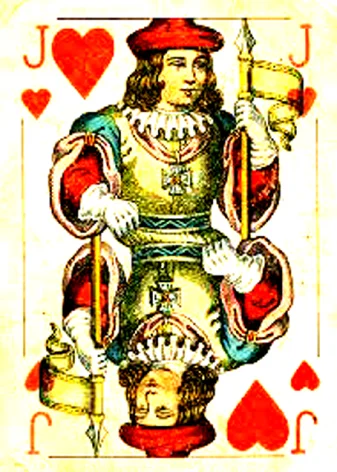LILY, ROSEMARY AND THE JACK OF HEARTS
EXTRACTS FULL TEXT HERE
This is one of Dylan’s most appealing and enigmatic songs, full of witty rhyming, various poetic devices and characteristically colloquial turns of phrase. Like The Ballad of Frankie Lee and Judas Priest (its most obvious antecedent) it is a comic narrative which can be interpreted in many different ways. As with other songs on Blood on the Tracks, we are not certain whether the story in the song is told chronologically. Only certain selected details aryyyy212presented, as if we are watching a movie shot in the style of early 60s French New Wave directors such as Francois Truffaurt and Jean Luc Godard, which has been quite heavily edited using ‘jump cuts’. The song anticipates the deliberately cinematic writing on Desire.

Like Desolation Row, Lily is a hard song to deliver because it has a rigid lyrical format and a repetitive musical structure, with no choruses but with every verse ending in the title phrase. It has fifteen verses (sixteen in the original version) all of which consist of two rhyming couplets, followed by a non-rhyming line ending in the title phrase. Dylan’s original acoustic recording from the ‘New York Sessions’ for Blood on the Tracks (which appears on the Bootleg Series release The Cutting Edge) drags a little because of this lack of musical texture. But the addition of bass and drums on the final version creates a swinging mood which is very much in tune with the song’s playful nature. Surprisingly, though, Dylan has only ever played the song live once, at Salt Lake City on 25th May 1976. Sadly there is no known recording of this show.

There is a tradition in both song and literature in which specific playing cards represent or even turn into particular individuals, most famously in Lewis Carroll’s Alice Through the Looking Glass. In Sippie Wallace’s Jack O’ Diamonds Blues (1926) the ‘Jack’ is clearly a male lover. There are echoes of such songs in the Rolling Stones’ classic Jumpin’ Jack Flash (1969). Some Other Kinds of Poems, Dylan’s sleeve notes for the Another Side album (1964), includes one poem which riffs around the traditional song Jack O’Diamonds. A 1964 song of the same title by Ben Carruthers and The Deep (later covered by Fairport Convention) sets this to music and is credited to Dylan/Carruthers. In fact this version uses little of Dylan’s poem and is closer to the traditional song (which had been recorded by Blind Lemon Jefferson, Mance Lipscomb, Leadbelly, Lonnie Donegan and many others) with its refrain of …Jack O’Diamonds is a hard card to play…

In the traditional playing card pack, the jacks of hearts and spades are known as ‘one-eyed jacks’ because they are pictured facing sideways, whereas the jacks of clubs and diamonds show the whole face of the figures. In the game of five card stud, the one-eyed jacks are ‘wild’ cards which can take the place of any other cards – thus representing enigmatic, unpredictable and mysterious characters. One-Eyed Jacks is also the name of a visually dazzling 1961 ‘revisionist western’ (a development of the genre which questions the usual Western stereotypes) starring Marlon Brando, in his only directorial effort. Ballad of the One Eyed Jacks (1961), a song by Johnny Burnette, which was released to tie in with the movie, personifies the characters as ‘playing cards, and includes the lines: …Never trust a one-eyed Jack with his cold, cold heart of stone/ He will only show one side to you, for his soul is the devil’s own… One of Dylan’s earliest songs, the unfinished One Eyed Jacks (circa 1961), of which an almost inaudible recording exists, includes the lyrics: …The queen of his diamonds/ And the jack his knave/ Won’t you dig my grave/ With a silver spade …..

The next line is another cinematic tour de force and a great example of Dylan’s lyrical dexterity. We hear that …Then everyone commenced to do what they were doing before they turned their heads… as if we had suddenly witnessed a freeze frame; a technique used prominently in the famous final shot in one of Dylan’s favourite movies, Truffaut’s The 400 Blows. The Jack swaggers around the saloon, grinning as he enquires when ‘the show’ will begin. However, no such show will actually be described in the song. Perhaps it is actually here, rather than the first verse, that the real action begins. The second verse ends with a brilliantly compressed expression of the notion that the protagonist is both a person and a playing card: …Then he moved into the corner, face down like the Jack of Hearts… The use of the term ‘face down’ – a term for a potentially winning card which the player has not yet revealed – suggests that the Jack is hiding away in the shadows, biding his time.

A Queen Without a Crown
The notion that the action in the story is occurring simultaneously in real life and a card game is made even more explicit in the next verse, where we hear that ‘the girls’ (presumably Lily and Rosemary) are engaged in a game of five card stud, a very popular version of poker in late nineteenth century America. It is also the title of Henry Hathaway’s 1968 movie, starring Dean Martin and Robert Mitchum, about murders that follow accusations of cheating in a card game. It seems that Lily is on the point of winning the game, as she has two Queens and is hoping to gain a third to complete her hand. But she fails to obtain this card and (naturally) draws the Jack of Hearts. It is, yet again, even possible that here is where the real action of the song begins.
LINKS….
DAILY DYLAN NEWS at the wonderful EXPECTING RAIN
THE BOB DYLAN PROJECT- COMPREHENSIVE LISTINGS
STILL ON THE ROAD – ALL DYLAN’S GIGS



Leave a Reply